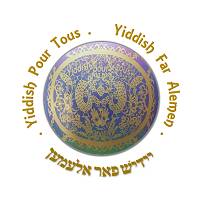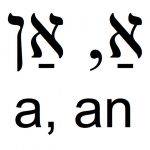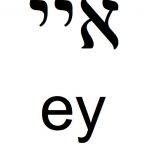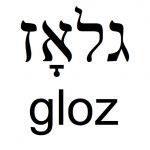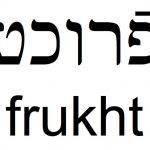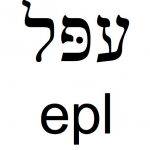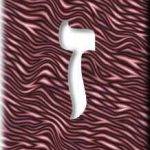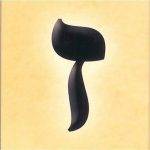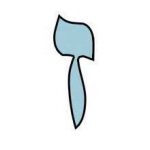IKH VIL ESN A FRUKHT.
VILSTU ESN AN EPL?
DI FROY TRINKT A GLOZ TEY MIT MILKH
DER MAN EST AN EY.
A, AN = אַ, אַן = UN, UNE = A, AN
DI FRUKHT = די פֿרוכט = LE FRUIT = THE FRUIT
DER EPL = דער עפּל = LA POMME = THE APPLE
DOS GLOZ = דאָס גלאָז = LE VERRE = THE GLASS
DOS EY = דאָס אײ = L’OEUF = THE EGG
Nous découvrons maintenant l’article indéfini au singulier. Vous pouvez voir:
1. Qu’il peut prendre 2 formes, A et AN. Cela dépend du nom qui vient derrière. S’il commence par une consonne, on dit A. Si c’est une voyelle, AN. C’est uniquement une question de confort d’élocution.
2. Qu’il est invariable. Peut importe que le nom soit masculin, féminin ou neutre. C’est bien pratique quand on n’est pas sûr du genre du nom. Il suffit d’utiliser l’article indéfini.
3. Que parfois il disparait complètement, comme dans “ikh trink tey”, ou “a gloz tey”, par exemple. DU thé, un verre DE thé, disons-nous en français. C’est ce que les grammairiens appellent un article partitif. On l’utilise devant le nom d’une chose qui n’est pas dénombrée: une certaine quantité de lait, de café, de beurre etc… mais on ne compte pas les gouttes de lait ou les morceaux de beurre. En yiddish, il n’y a pas d’article partitif ou plus exactement, il est vide. Comme en anglais d’ailleurs.
We now discover the indefinite article in the singular. You can see:
1. That it can take 2 forms, A and AN. It depends on the name behind it. If it starts with a consonant, we say A. If it’s a vowel, AN. It’s only a matter of speaking comfort.
2. That it is invariable. It does not matter if the name is masculine, feminine or neutral. This is handy when you’re not sure what the gender is. Just use the indefinite article.
3. That sometimes it disappears completely, as in “ikh trink tey”, or “a gloz tey”, for example. Tea, a glass of tea. This is what grammarians call a partitive article. It is used before of the name of a thing that is not quantified: a certain quantity of milk, coffee, butter etc … but one does not count the drops of milk or the pieces of butter. Contrary to French, In Yiddish, there is no partitive article or more exactly, it is empty. As in English for that matter.
Apprenez à reconnaître la lettre ז (zayin) qui correspond au son Z. Pour plus de détails voir le post de Regine Bloch-Fiderer:
Learn to recognize the letter ז (zayin) that corresponds to sound Z. For more details see Regine Bloch-Fiderer’s post
https://www.facebook.com/groups/YiddishPourLesNuls/permalink/499805910201792/
Ecoutez l’audio de ce cours ici/ listen to the audio of this class here
https://soundcloud.com/user-369999034/yiddish-lecon-13
